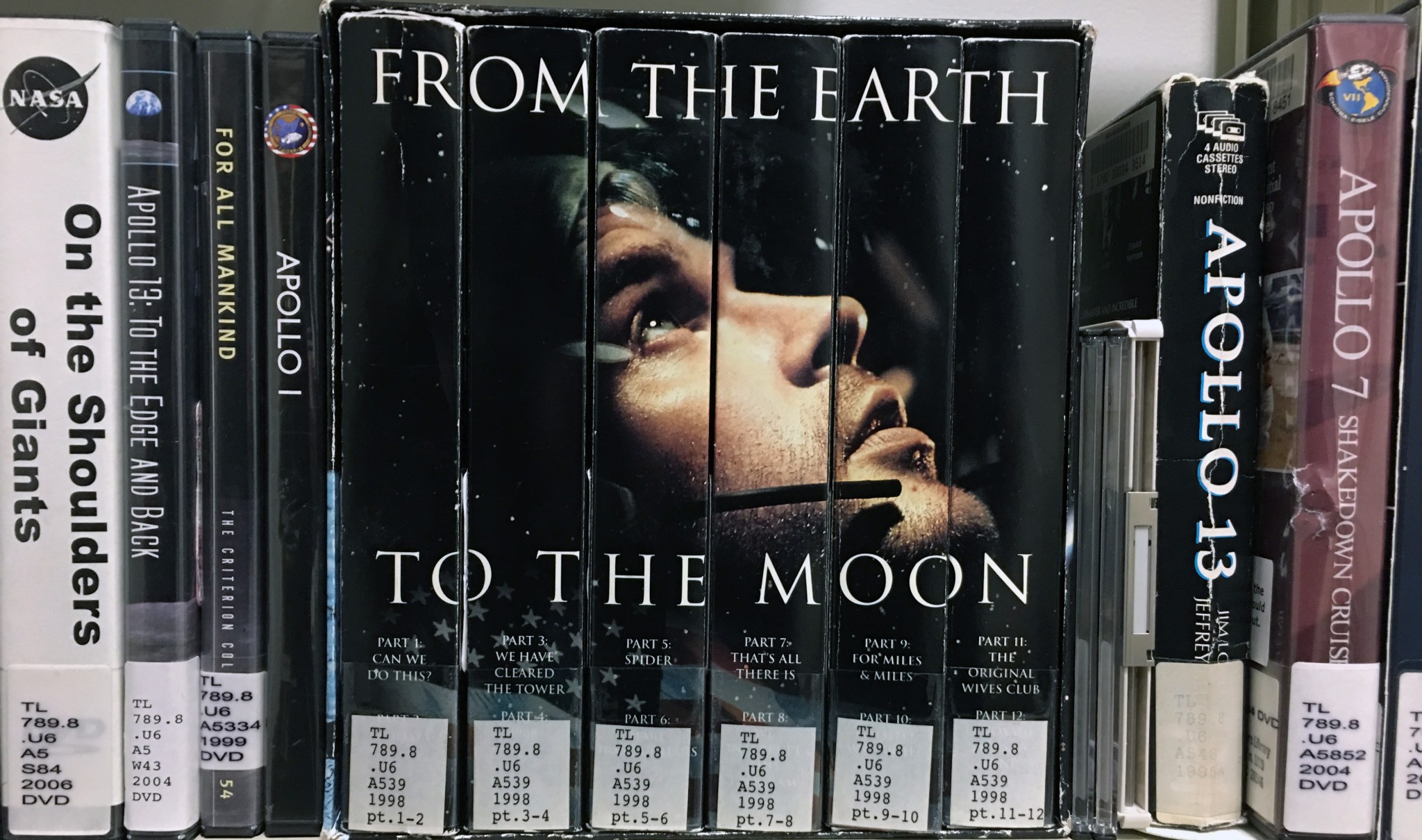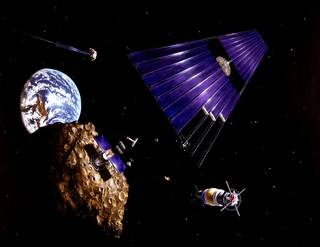“The question to ask is whether the risk of traveling to space is worth the benefit. The answer is an unequivocal yes, but not only for the reasons that are usually touted by the space community: the need to explore, the scientific return, and the possibility of commercial profit. The most compelling reason, a very long-term one, is the necessity of using space to protect Earth and guarantee the survival of humanity.”
–William E. Burrows, The Wall Street Journal, 2003
As early as Jules Verne’s From the Earth to the Moon, space travel has been envisioned as being driven by non-government entities, albeit with some governmental financial backing. Early rocketry research largely followed that trajectory with independent space clubs initiating the first rockets followed by educational institutions. As financial needs and infrastructure requirements grew with little prospect for rewards, governments entered the field with interest in the military applications. Except for communication satellites, commercial space endeavors in the U.S. generally remained limited to contracting support of government programs until the late 1970s.
In 1983, President Reagan Administration signed NSDD-94 which pushed for increased commercial launches, a move accelerated after the loss of Space Shuttle Challenger in 1986. To further stimulate the development of commercial space market, NASA Administrator Mike Griffin and the Bush administration rolled out Commercial Orbital Transportation Services (COTS) to provide commercial launch services to resupply the International Space Station. While COTS included crew options, it wasn’t until the administration of President Obama that an accelerated effort for commercial crew services began to cover the growing gap between NASA manned launch systems. During the administration of President Trump, commercial crew reached fruition with the launch of DEMO-1 in May 2020.
All items are available at the Headquarters Library, except as noted. NASA Headquarters employees and contractors: Call x0168 or email Library@hq.nasa.gov for information on borrowing or in-library use of any of these items. Members of the public: Contact your local library for the availability of these items. NASA Headquarters employees can request additional materials or research on this topic. The Library welcomes your comments or suggestions about this webpage.
NASA POLICIES
The following policies and procedural requirements can be accessed by anyone through the NASA Online Directives Information System:
- NASA Policy Directive 8610.23C: Launch Vehicle Technical Oversight Policy
- NASA Policy Directive 8610.24C: Launch Services Program Pre-Launch Readiness Reviews
- NASA Policy Directive 8610.7D: Launch Services Risk Mitigation Policy for NASA-Owned and/or NASA-Sponsored Payloads/Missions
- NASA Procedural Requirements 8705.2C: Human-Rating Requirements for Space Systems
- NASA Procedural Requirements 8715.7C: Payload Safety Program
NASA STANDARDS
- NASA Space Flight Human System Standard Volume 1: Crew Health. 2014. NASA-STD-3001 Vol. 1
- NASA Space Flight Human System Standard Volume 2: Human Factors, Habitability, and Environmental Health. 2019. NASA-STD-3001 VOL 2
BOOKS
Besha, Patrick and Alexander MacDonald (editors). 2016. Economic Development of Low Earth Orbit. NP-2016-03-2140-HQ. Washington, DC: National Aeronautics and Space Administration. https://www3.nasa.gov/sites/default/files/atoms/files/economic-development-of-low-earth-orbit_tagged_v2.pdf
TL 856.E266 B473 2016 BOOKSTACKS
COMSTAC RLV Working Group, Task Force on Training. 2008. Commercial Human Space Operations Training Standards. Washington, DC: Federal Aviation Administration. https://www.faa.gov/about/office_org/headquarters_offices/ast/advisory_committee/meeting_news/media/Commercial_Human_Space_Operations_Training_Standards.pdf
TL 712.C667 C666 2008 BOOKSTACKS
Crane, Keith W.; Benjamin A. Corbin; Bhavya Lai; Reina S. Buenconsejo; Danielle Piskorz; and, Analisa L. Weigel. 2018. Market Analysis of a Privately Owned and Operated Space Station. Washington, DC: IDA Science & Technology Policy Institute. https://www.ida.org/-/media/feature/publications/m/ma/market-analysis-of-a-privately-owned-and-operated-space-station/p-8247.ashx
TL 797.C754 2018 BOOKSTACKS
Dawson, Linda. 2016. The Politics and Perils of Space Exploration: Who Will Compete, Who Will Dominate? New York, NY: Springer Science+Business Media.
QB 500.262.U5 D3 2016 BOOKSTACKS
Dubbs, Chris and Emeline Paat-Dahstrom. 2011. Realizing Tomorrow: The Path to Private Spaceflight. Lincoln: University of Nebraska Press.
TL 790.D79 2011 BOOKSTACKS
Dula, Arthur M. and Zhang Zhenjun (eds.) 2015. Space Mineral Resources: A Global Assessment of the Challenges and Opportunities. International Academy of Astronautics.
TN 291.3 S63 2015 BOOKSTACKS
Guthrie, Julian. 2016. How to Make a Spaceship: A Band of Renegades, an Epic Race, and the Birth of Private Space Flight. New York: Penguin Press.
TL 795.G88 2016 BOOKSTACKS
Jakhu, Ram S.; Joseph N. Pelton; and, Yaw O.M. Nyampong. 2017. Space Mining and Its Regulation. Chichester, UK: Praxis Publishing.
KZD 3491.5.J35 2017 BOOKSTACKS
Launius, Roger D. 2014. Historical Analogs for the Stimulation of Space Commerce. NASA SP-2914-4554. Washington, DC: National Aeronautics and Space Administration, History Program Office. https://www.nasa.gov/connect/ebooks/historical_analogs_detail.html
HD 9711.75.U621 L28 2014 BOOKSTACKS
MacDonald, Alex and Andrea Riley. 2014. Public-Private Partnerships for Space Capability Development: Driving Economic Growth and NASA’s Mission. Washington, DC: National Aeronautics and Space Administration. https://www3.nasa.gov/sites/default/files/files/NASA_Partnership_Report_LR_20140429.pdf
HD 9711.75.T387 P835 2014 BOOKSTACKS
MacDonald, Alexander. 2017. The Long Space Age: The Economic Origins of Space Exploration from Colonial America to the Cold War. New Haven, CT: Yale University Press.
TL 789.8.U5 M23 2017 BOOKSTACKS
Oxford Analytica. 2008. Understanding the Space Economy: Competition, Cooperation and Commerce: A Study Produced for NASA. New York: Oxford Analytica, 2008. https://isulibrary.isunet.edu/doc_num.php?explnum_id=290
HD 9711.75.U534 2008 BOOKSTACKS
Pyle, Rod. 2019. Space 2.0: How Private Spaceflight, a Resurgent NASA, and International Partners are Creating a New Space. Dallas, TX: BenBella Books.
QB 500.P95 2019 BOOKSTACKS
Sandford, Stephen and Jay Heinrichs. 2016. The Gravity Well: America’s Next, Greatest Mission. Pacific Grove, CA: Gavia Books.
TL 789.8.U5 S265 2016 BOOKSTACKS
Schmitt, Harrison H. 2006. Return to the Moon: Exploration, Enterprise, and Energy in the Human Settlement of Space. New York, NY: Copernicus Books, in association with Praxis Publishing.
TL 799.M6 S34 2006 BOOKSTACKS
Tauri Group. 2014. Suborbital Reusable Vehicles: A 10-Year Forecast of Market Demand. Alexandria, VA: Tauri Group. https://www.faa.gov/about/office_org/headquarters_offices/ast/media/suborbital_reusable_vehicles_report_full.pdf
HD 9711.75.U63 T387 2014 BOOKSTACKS
United States. Office of Commercial Space Administration. The U.S. Commercial Suborbital Industry: A Space Renaissance in the Making. Washington, DC: U.S. Dept. of Transportation, Federal Aviation Administration. https://www.faa.gov/about/office_org/headquarters_offices/ast/media/111460.pdf
HD 9711.75.U63 C378 BOOKSTACKS
United States. Office of Commercial Space Transportation. 2014. Recommended Practices for Human Space Flight Occupant Safety. Washington, DC: Federal Aviation Administration, Office of Commercial Space Transportation. https://www.faa.gov/about/office_org/headquarters_offices/ast/media/recommended_practices_for_hsf_occupant_safety-version_1-tc14-0037.pdf
TL 867.F43 R436 2014 BOOKSTACKS
Wouters, Jan; Philip de Man; and, Rik Hansen (editors). 2017. Commercial Uses of Space and Space Tourism: Legal and Policy Aspects. Northampton, MA: Edward Elgar Publishing.
KZD 4050.C66 2017 BOOKSTACKS
Online Books & E-BOOKS
Crane, Keith W.; Evan Linck; Bhavya Lal; and, Rachel Y. Wei. 2020. Measuring the Space Economy: Estimating the Value of Economic Activities in and for Space. Alexandria, VA ; IDA Science & Technology Policy Institute. https://www.ida.org/-/media/feature/publications/m/me/measuring-the-space-economy-estimating-the-value-of-economic-activities-in-and-for-space/d-10814.ashx
Crane, Keith W.; Evan Linck; Sara A. Carioscia; and, Bhavya Lal. 2019. Assessment of the Utility of a Government Strategic Investment Fund For Space. Alexandria, VA: Institute for Defense Analyses. https://www.ida.org/-/media/feature/publications/a/as/assessment-of-the-utility-of-a-government-strategic-investment-fund-for-space/d-10616.ashx
Greason, Jeff. 2019. The Economics of Space: An Industry Ready to Launch. [Los Angeles, CA], Reason Foundation. https://reason.org/wp-content/uploads/economics-of-space.pdf
International Space Station (ISS) Cooperative Agreement Independent Review Team. 2020. A Strategy for the Future of the International Space Station: Final report to NASA. Washington, DC: Independent Review Team. https://www3.nasa.gov/sites/default/files/atoms/files/iss_cooperative_agreement_irt_final_report.pdf
Lambright, Henry. “Launching commercial space: NASA, cargo, and policy innovation.” Space Policy 34, November 2015, Pages 23-31. https://doi.org/10.1016/j.spacepol.2015.05.005
Liu, Irina; Evan Linck; Bhavya Lal; Keith W. Crane; Xueying Han; and Thomas J. Colvin. 2019. Evaluation of China’s Commercial Space Sector. Alexandria, VA: Institute for Defense Analyses. https://www.ida.org/-/media/feature/publications/e/ev/evaluation-of-chinas-commercial-space-sector/d-10873.ashx
National Academies of Sciences, Engineering, and Medicine. 2020. Commercial Space Operations Noise and Sonic Boom Measurements. Washington, DC: The National Academies Press. https://www.nap.edu/catalog/25834/commercial-space-operations-noise-and-sonic-boom-measurements
National Academies of Sciences, Engineering, and Medicine. 2019. Review of the Commercial Aspects of NASA SMD’s Lunar Science and Exploration Initiative. Washington, DC: The National Academies Press. https://doi.org/10.17226/25374
Near Earth, LLC. 2010. Supporting Commercial Space Development. New York, NY: Near Earth, LLC., November 2010.
Part 1: Support Alternatives versus Investor Risk Perceptions & Tolerances. https://www3.nasa.gov/sites/default/files/files/SupportingCommercialSpaceDevelopmentPart1.pdf
Part 2: Support Alternatives versus NASA Commercialization Priorities. https://www3.nasa.gov/sites/default/files/files/SupportingCommercialSpaceDevelopmentPart2.pdf
Pittman, Robert B. and Daniel J. Rasky. 2017. “Deep Space Industrialization: Key to Sustainable Exploration, Development and Settlement of the Solar System.” ARC-E-DAA-TN47153. 68th Annual International Astronautical Congress (IAC); September 25, 2017 – September 29, 2017; Adelaide; Australia. http://hdl.handle.net/2060/20200000424
Saletta, Morgan Sterling and Kevin Orrman-Rossiter. “Can space mining benefit all of humanity?: The resource fund and citizen’s dividend model of Alaska, the ‘last frontier’.” Space Policy 43, February 2018, Pages 1-6. https://doi.org/10.1016/j.spacepol.2018.02.002
United States. Office of Commercial Space Transportation. 2018. Annual Compendium of Commercial Space Transportation. Washington, DC: Federal Aviation Administration, Office of Commercial Space Transportation. https://www.faa.gov/about/office_org/headquarters_offices/ast/media/2018_AST_Compendium.pdf
Wakimoto, Takuya. “Ensuring the Safety of Commercial Space Transportation through Standardization: Implications of the Chicago Convention and ICAO Standards.” Space Policy. Volume 49, August 2019. https://doi.org/10.1016/j.spacepol.2019.05.004
INTERNET RESOURCES
Governmental
- Department of Commerce. Office of Space Commerce. https://www.space.commerce.gov/
- Federal Aviation Administration. Office of Commercial Space Transportation. https://www.faa.gov/about/office_org/headquarters_offices/ast/
- National Aeronautics and Space Administration (NASA). Commercial Space Economy. https://www.nasa.gov/exploration/commercial/index.html
- National Aeronautics and Space Administration (NASA). Low-Earth Orbit Economy. https://www.nasa.gov/leo-economy/welcome-to-low-earth-orbit-economy
Non-Governmental
- American Institute of Aeronautics and Astronautics (AIAA). Commercial Space Group Facebook page. https://www.facebook.com/AIAACSG/
- Commercial Spaceflight Federation. http://www.commercialspaceflight.org/



























